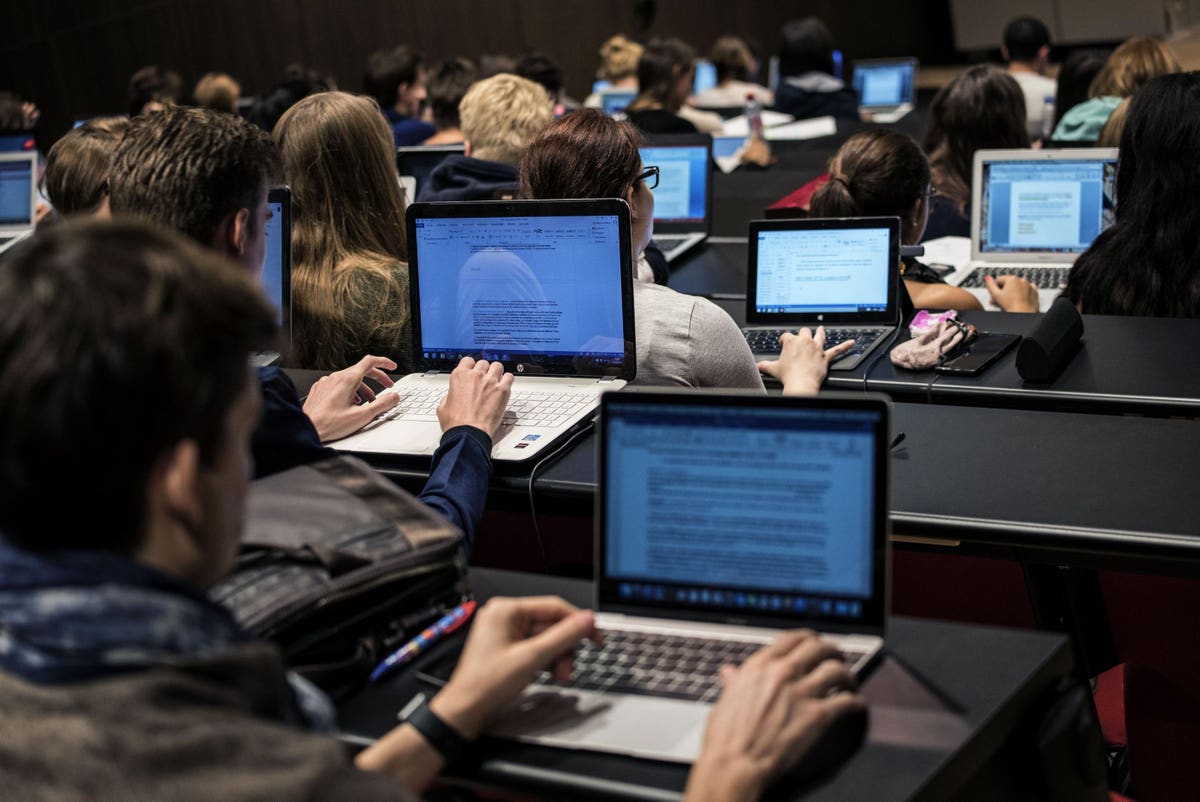As instructors settle into a new academic year, AI technologies like ChatGPT offer new dimensions for teaching and student engagement. While the allure of AI is captivating, the chatbots are still in their formative stages and thus imperfect, sometimes producing a mix of facts and fiction and raising an array of questions about academic integrity.
Many higher education institutions have recently changed their stances on the tools, from banning them last spring to allowing instructors to use the technology in their classes this fall. While the overwhelming majority of higher education institutions lack formal policies on the use of AI, according to research by Tayton Partners, some have developed helpful guidance, such as the Rutgers AI Council Working Document, University of Arizona Library’s AI Literacy in the Age of ChatGPT, or the Neeley School of Business Course Refresh Using ChatGPT at Texas Christian University, where I teach.
Most institutions are deferring to faculty to set their own policies on appropriate use. To assist, OpenAI, the maker of ChatGPT, recently released a comprehensive guide called Teaching with AI offering different navigational approaches for educators. It provides a comprehensive discussion of generative AI and ChatGPT’s capabilities, limitations and potential applications.
AI tools can help instructors redesign classes to offer more meaningful work rather than requiring rote memorization by, for example, asking students to critically evaluate the output provided by a chatbot and then submit their final answers. However, educators should exercise oversight when employing these tools to make sure that AI-made-up fiction is not presented as truth in their classes.
The Ineffectiveness Of AI Detectors
To combat student cheating with conversational AI tools, a plethora of AI detectors were developed ̶ most prominent offered by GPTZero and TurnitIn ̶ which use AI to determine if a piece of text was written by a human or generated by AI. While the concept of AI detectors initially promised to reliably assess students’ work, recent studies show that this sense of security is only illusionary.
The AI detectors are not foolproof and can be easily circumvented by students making minor edits to AI-generated content, thereby evading detection. Moreover, the risk of false positives—incorrectly flagging legitimate student work as AI-generated—poses a considerable ethical and academic concern.
The consequences of such false positives could range from unwarranted academic penalties to damaging the trust relationship between instructors and students. This compromises the integrity of the educational process and could have long-lasting repercussions on a student’s academic journey.
Since there is no way for instructors to figure out if students are taking shortcuts with generative AI because the AI detectors do not work, prohibiting the use of the tool in the classroom is fruitless. The Washington Post even offers a guide to students on what to do when they’re accused of AI cheating. Therefore, if we cannot prohibit AI use, we might as well embrace it and guide our students in ethical uses that fit our course objectives.
Embracing AI And Mastering The Art Of Prompting
One of the standout features of ChatGPT is its ability to handle a variety of prompts, enabling educators to tailor the AI’s interactions according to their specific needs. Since conversational AI tools are designed for a broad range of interactive tasks, across all academic disciplines, they can support an educator by helping to automate some aspects of courses, such as answering students’ last-minute clarification questions, generating case discussion questions, or even helping rephrase the tone of a document to appeal to a specific audience.
OpenAI’s guide provides several compelling and lengthy examples of prompts from Ethan Mollick, an AI influencer and University of Pennsylvania Wharton School professor, and Lilach Mollick, director of pedagogy at Wharton Interactive. These examples include a prompt for lesson plans; how to create effective explanations, analogies, and examples; how to help students learn by teaching and even how to create an AI tutor. These examples can serve as starting points for instructors looking to implement generative AI at a more meaningful level.
Examples from other instructors around the world include role-playing with ChatGPT pretending to be a debate partner or a recruiter, building quizzes and tests and helping English-as-a-second-language students write better. There are also examples of how to eliminate opportunities for students to cheat by asking them to show their work or analyze their interaction with AI tools to assess their critical thinking. These real-world examples provide tangible evidence of the technology’s efficacy.
Handling Limitations And Bias
The crucial topic of AI limitations and biases is also covered in the guides. Generative AI tools are trained on extensive datasets that sometimes propagate Western biases. They may associate certain jobs with a particular gender, reinforcing stereotypes, such as representing engineers as only men. OpenAI’s guide offers suggestions on how instructors might assist students in mitigating these biases. For instance, instructors can address the problem by incorporating discussions about AI ethics into their curriculum, thereby preparing students for a more socially responsible use of the technology.
Extensive Resource Pool
The faculty guides typically do not just offer helpful advice; they also introduce instructors to a range of educational resources, including custom instructions to establish preferences they would like ChatGPT to consider when generating its responses. There are short online courses, including a course from Auburn University, Teaching with Artificial Intelligence, in addition to a plethora of guides and webinars offered online by educational organizations to help instructors get comfortable with AI in the classroom.
The role of AI in higher education will grow in importance as it adapts to the demands and opportunities of the digital era. The guides give instructors a solid foundation for understanding and successfully using conversational AI tools. Instructors may not only remain at the forefront of educational innovation but also give their students a more meaningful, engaging, and modern learning experience by using the insights, tools and real-world examples offered by the AI platforms.
Read the full article here





